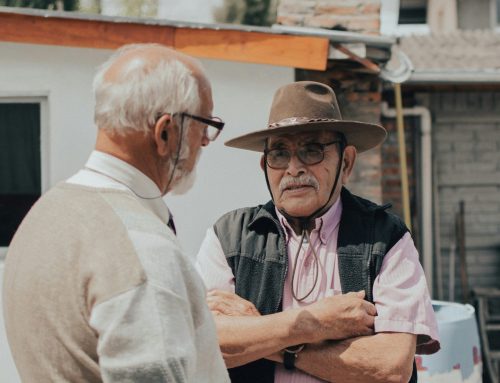There was a time when keeping in contact with someone meant handwritten letters, often in cursive with stamps and envelopes. These letters could be kept and reread as often as you like. A rotary phone meant dialing each number slow and with intention.
Today, communication has shifted dramatically. Email, text, social media, and video chat have replaced decades old rituals. For seniors and their adult-child caregivers, staying conscious of this transition can help bridge generations and strengthen family bonds.
The Transition to Modern Communications
In the 1950s and 60s, a family phone was a central hub. Neighbors shared lines, and every call had purpose. Handwritten letters traveled days or weeks, connecting loved ones across distances.
By the late 1990s, email and cell phones began to emerge. Suddenly, a “hello” could arrive within seconds. With video chat, we got face-to-face conversations, and grandparents could watch grandchildren blow out birthday candles from hundreds of miles away.
What It Means Today
When adult children help their parents use video chat, they’re fostering meaningful connections. Someone who once only knew rotary dialing, can connect with family over FaceTime. That real-time interaction echoes the intimacy of a handwritten letter but with instant warmth.
Practical Tips for Working With Elderly on Technology
- Choose Simple Devices: Tablets with large icons and one-tap video apps help seniors navigate without frustration.
- Create a Cheat Sheet: Write clear, large-print steps such as “Press the green ‘Family Chat’ icon, tap ‘Grandkids,’ and speak when you see yourself.”
- Schedule “Tech Help” Sessions: Weekly check-ins to troubleshoot and answer any questions can reinforce confidence.
- Blend Analog and Digital: Handwritten notes can still have a sentimental impact and give people a reason to look forward to checking the mail.
Emotional Impact
Video chat reduces isolation. Hearing a child’s laughter or seeing a grandchild’s achievement brightens a day. This blend of tradition and innovation honors the handwritten letter’s warmth while embracing digital immediacy. Sharing these moments keeps families close, regardless of miles.
Looking Forward
Communication will continue to evolve. Perhaps one day holograms will let you “sit across the table” from a loved one during Sunday dinner. As seniors and their adult-child caregivers navigate digital technology, they forge a bond that honors the warmth of a hand-written letter while embracing the clarity of video.
Whether you’re dusting off an old photo album or learning to tap an emoji, every effort to stay in touch nurtures family ties. By blending the nostalgic with the new, families can ensure that every “hello” carries both the echoes of yesterday and the possibilities of tomorrow.








